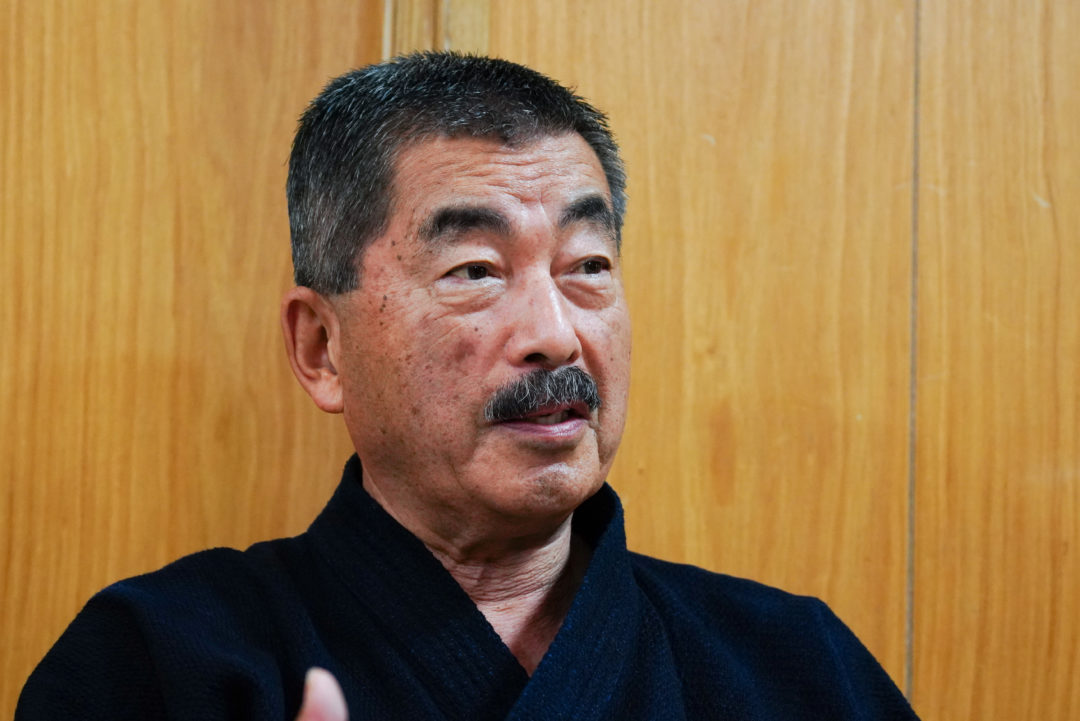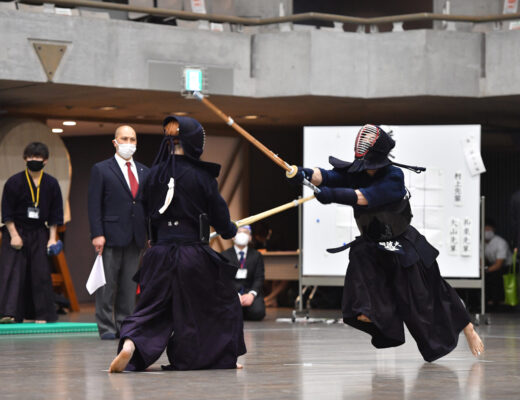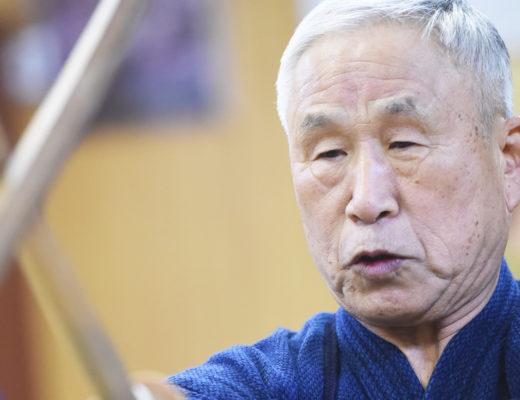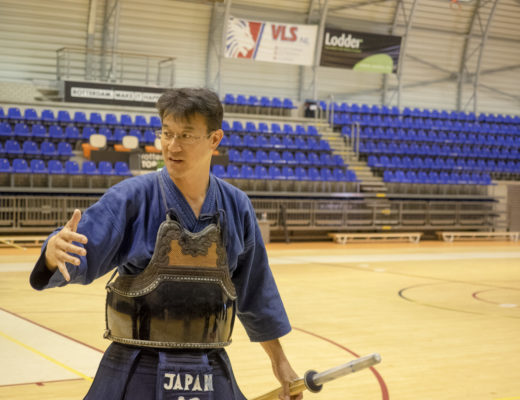2020.7 KENDOJIDAI
“In order to do Suburi that will be useful in competitive scenarios, you must swing in one movement”, Nakamura says. To do so, you must create a Kamae that allows you to strike instantaneously. Here are few things to keep in mind in order to do Suburi that is directly related to competitive settings.

Nakamura Fukuyoshi, Kyoshi 8th Dan
Born in Tokyo in 1948. As the third generation swordsman of Tokyo Shudokan Dojo, which is celebrating its 102nd anniversary this year, he worked under the guidance of his grandfather Nakamura Hikota and his father Nakamura Tsuruji for four years. He was introduced to Kendo at the age of sixteen, and went on to study Kendo at Keio High School and Keio University. Nakamura Sensei started working for Tokyu Land Corporation before becoming an independent contractor. He is also a family man. Currently, he is the head of the Dojo, where he teaches the next generation. He is the president of Tokyo Kendo Dojo Association and former coach of the Keio University Kendo Club.
It has been almost 70 years since I started Kendo. The older I get, the more I realize that Suburi is an important part of Kendo Keiko. Kendo is about applying Seme, disrupting your opponent and catching the opportunities that you created. Moreover, you must strike without losing your posture to make a satisfactory Ippon.
Especially for 6th Dan and above, you are expected to play a leadership role and examinations are done based on quality of fights as well whether the basics are appropriate for the rank. To learn those basics, the practice of Suburi is essential. It is important to learn the correct way of swinging and the use of the body and supplement your Keiko with it.
At Shudokan, we do footwork and Suburi before we put on our Men. It is not just warming up, we are teaching how to connect your Suburi and footwork to Ippons. Since there is not much time for warming up in Bogu for examinations, so we aim for a Suburi that prepares you entirely.
Create a Kamae to strike at any time
What you want to be aware of is closing your left armpit and having a sensation of placing your left fist on your left hip. When you place your left fist on your left hip, the center of gravity is on your left leg and you can respond to the opponent’s movement instantly. When the will to strike is too strong, the center of gravity rests on the right foot and the Kamae gets focused on the right side of the body. You cannot strike in one movement with this kind of Kamae.
Relax the shoulders and arms and lightly tighten the left armpit. Put power into the lower core area and be aware of taking Kamae in a large manner as if to overwhelm your imagined opponent. When you exhale with abdominal breathing, you can feel power in the area behind the navel, so focus on this.
The V-shaped grip of the thumb and forefinger on both hands should be facing up. The first joint of the left thumb is at the front of the navel. Don’t bring the left fist too close to the navel. The little finger of the left hand should cover the bottom of the Tsuka halfway, the little finger, ring finger and middle finger should grip tightly, and the index finger and thumb wrap around the Shinai as support.
The right elbow should have space to move and not be overstretched. The Shinai is gripped softly with the whole palm of the right hand with enough strength to turn it in.
To make a Kamae with the center of gravity on the left foot, the foot stance is important. The heel of the right foot should float slightly at about a sheet of paper height, and the heel of the left foot should float about one or two fingers above the floor. Any more than that and your knee will be too bent. By squeezing the inside of both feet and gripping the floor with the soles of your feet, the lower half of the body will be enriched, and you will have a steady lower body and flexible upper body. Try to maintain this Kamae at all times.
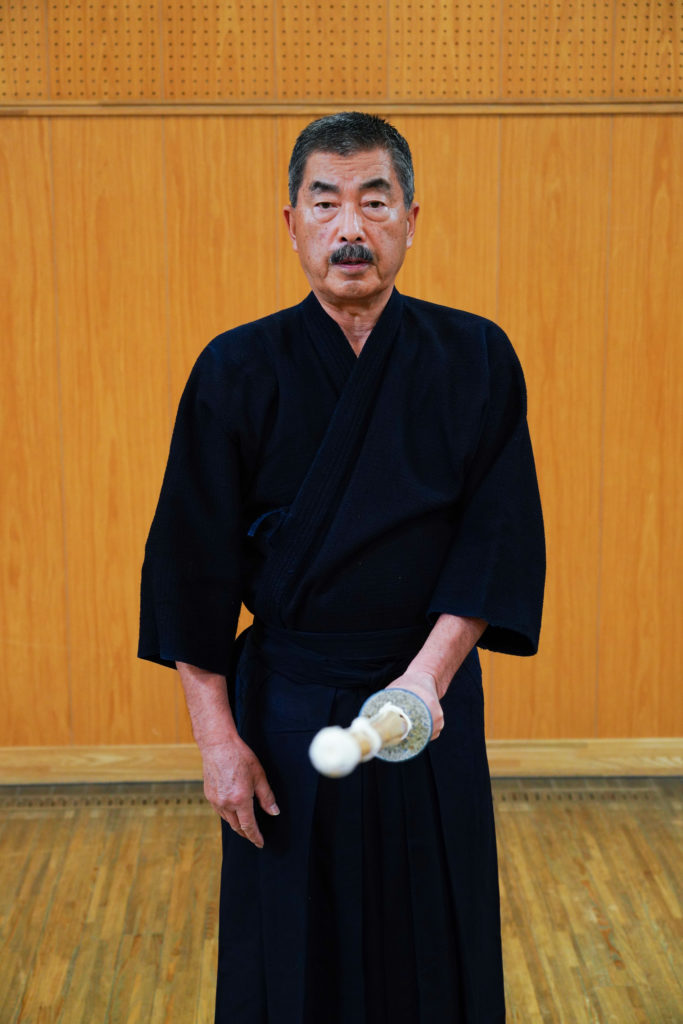
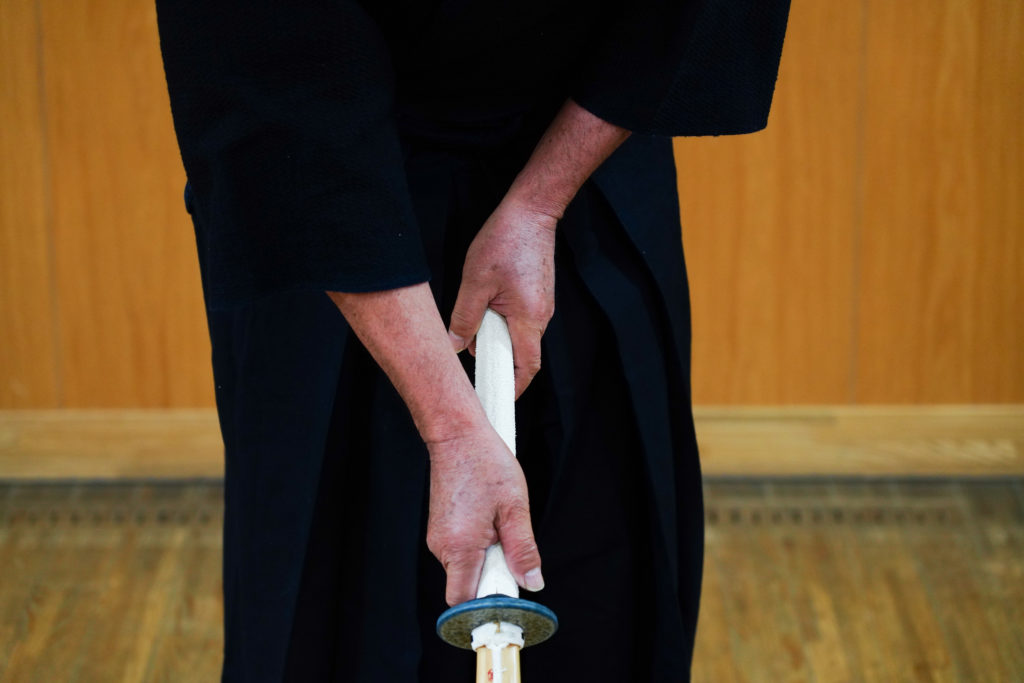


The rest of this article is only available for Kendo Jidai International subscribers!

